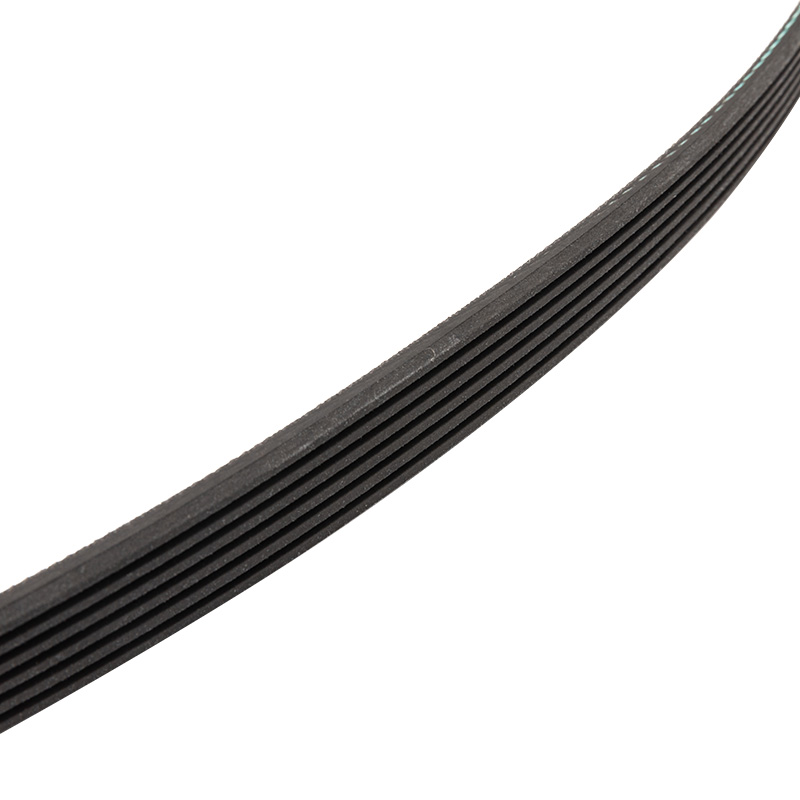Variable speed V-Belts, also known as adjustable or variable pitch V-Belts, are used in applications where it's necessary to adjust the speed ratio between the driving and driven pulleys. These belts are designed with a mechanism that allows the effective length of the belt to be altered, changing the speed ratio and allowing for variable speeds. Here are some common applications and benefits of variable speed V-Belts in industrial machinery:
Applications:
1.Machine Tools:
Variable speed V-Belts are used in lathes, milling machines, and drilling machines, allowing operators to adjust the speed according to the material being processed.
2.HVAC Systems:
In heating, ventilation, and air conditioning systems, variable speed V-Belts are used in fans and blowers, enabling precise control over the airflow for different environmental conditions.
3.Conveyors:
Variable speed V-Belts are used in conveyor systems where the speed needs to be adjusted based on the load and production requirements.
4.Agricultural Equipment:
Tractors and other agricultural machinery use variable speed V-Belts to control various functions, such as harvesting and planting, where different speeds are required for different tasks.
5.Printing Machines:
Variable speed V-Belts are employed in printing presses, allowing operators to adjust the printing speed based on the type of material being printed and the desired quality.
6.Industrial Mixers:
Mixers used in food, pharmaceutical, and chemical industries utilize variable speed V-Belts to control the mixing speed, ensuring thorough and consistent mixing.
7.Woodworking Equipment:
Band saws, routers, and sanders in woodworking applications often use variable speed V-Belts to achieve different cutting and finishing speeds.
Benefits:
1. Flexibility in Operations:
Variable speed V-Belts provide industrial operations with unparalleled flexibility. Their ability to change speeds without altering pulley sizes allows for swift adaptations to varying tasks and materials. This flexibility is particularly valuable in industries where production requirements frequently change, enabling seamless transitions between different processes without extensive downtime or equipment modifications.
2. Energy Efficiency and Cost Savings:
Precise speed control, a hallmark of variable speed V-Belts, facilitates optimal energy consumption. By matching machinery speed to the specific task at hand, energy wastage is minimized. This results in substantial cost savings over time, making variable speed V-Belts a strategic choice for businesses aiming to reduce operational expenses and improve overall energy efficiency.
3. Prolonged Machinery Lifespan:
The ability to fine-tune speeds using variable speed V-Belts prevents unnecessary strain on machinery components. By eliminating sudden starts and stops, these belts mitigate mechanical stress, leading to prolonged lifespan of equipment. This reduced wear and tear not only save on maintenance costs but also enhance the reliability of industrial machinery, contributing to increased productivity and operational continuity.
4. Enhanced Product Quality and Consistency:
Certain industrial processes demand specific speeds for optimal results. Variable speed V-Belts ensure machinery operates at these precise speeds, which is crucial in industries such as pharmaceuticals, where exact formulations are vital. Consistent speeds enhance product quality and uniformity, meeting stringent industry standards and customer expectations.
5. Minimized Environmental Impact:
By optimizing energy usage, variable speed V-Belts play a role in environmental sustainability. Reduced energy consumption translates to lower greenhouse gas emissions and a smaller overall carbon footprint. This alignment with eco-friendly practices not only meets regulatory requirements but also enhances a company's reputation as a socially responsible and environmentally conscious organization.
6. Improved Process Control and Precision:
Industries requiring meticulous process control, such as precision engineering and semiconductor manufacturing, benefit significantly from variable speed V-Belts. The ability to fine-tune speeds with precision ensures that delicate tasks are performed accurately and consistently. This level of control is invaluable in processes where even minor variations can lead to defects or subpar product quality.
Automotive V-ribbed belts are belts used to drive a variety of components in an automotive engine, including the alternator, water pump, and air conditioning compressor. V-ribbed belts are named for the "V" shape of the cross-section of the belt, which provides a wedging action between the belt and the pulley to transmit power.


 View More >>
View More >>
 View More >>
View More >>
 View More >>
View More >>
 View More >>
View More >>
 View More >>
View More >>
 View More >>
View More >>
 View More >>
View More >>
 View More >>
View More >>
 View More >>
View More >>
 View More >>
View More >>
 View More >>
View More >>
 View More >>
View More >>